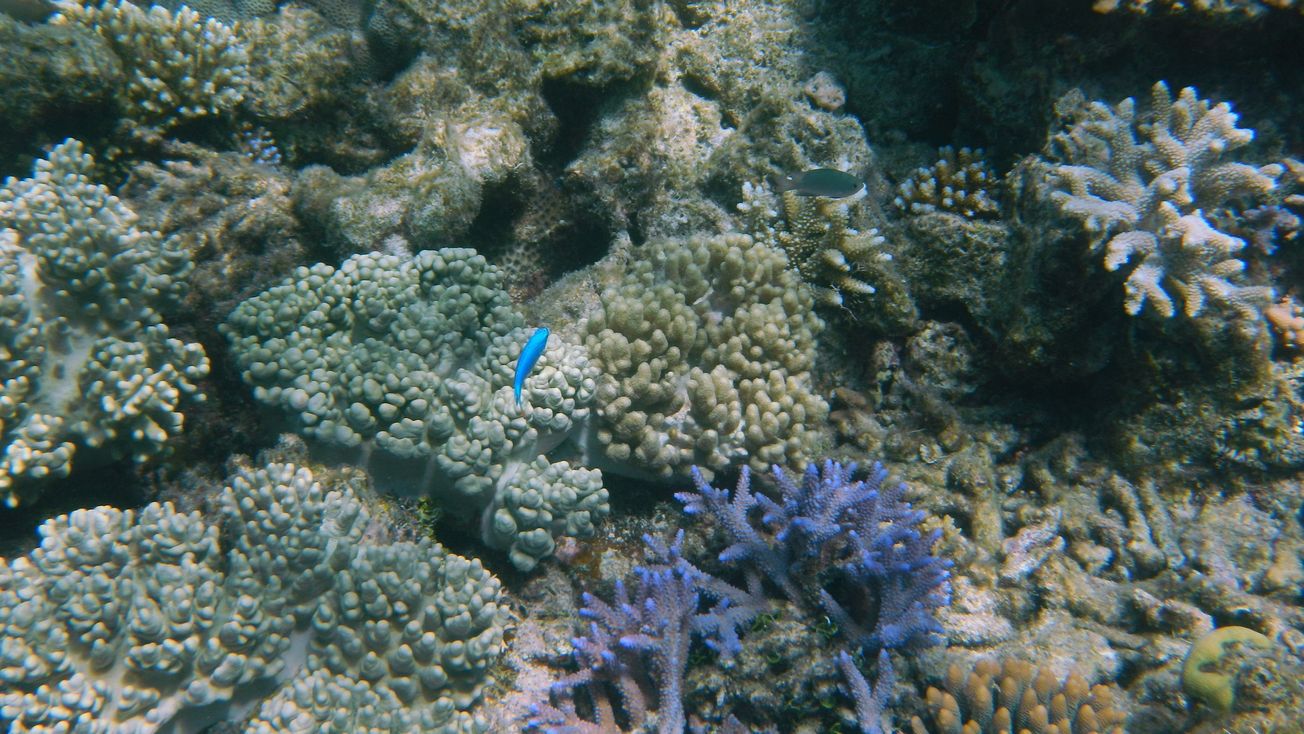By Annie La Vespa, Third year, Biology
New research shows that playing sounds characteristic of healthy coral reefs can attract fish back to degraded areas and help to rebuilt reefs.
Coral reefs have warned us about the state of our climate for many years now. The majority have been bleached by marine heatwaves or destroyed by other anthropogenic stressors such as pollution or overfishing. The plight of the world’s reefs will not improve unless there is urgent national and global action to address the climate crisis, which has been described as its greatest threat according to the latest outlook report, published by the Great Barrier Reef Marine Park Authority.
However, an international team of scientists from Universities of Exeter and Bristol and the Australian Institute of Marine Science may be able to offer a glimmer of hope with their trailblazing findings from a six-week field experiment. Since damaged reefs smell and sound less attractive as opposed to their healthy counterparts to these settling fish, the team of scientists aimed to test whether playing back healthy reef sound could increase fish settlement and retention to the degraded habitats.
The results of their study suggest young fish can be brought back to degraded coral reefs by playing the sounds of healthy reefs, which may speed up their recovery. “Healthy coral reefs are remarkably noisy places”, says Professor Steve Simpson from the University of Exeter. Noises from shrimp, fish and other wildlife combine to create a varied biological soundscape, which is used by juvenile fish to find a place to settle.
The researchers created 33 patches of dead coral rubble and placed them at several locations around Australia’s Great Barrier Reef in water a few metres deep. 11 patches were coupled with no loudspeaker, 11 patches were coupled with a dummy control loudspeaker system, and the last 11 had a real loudspeaker system playing back healthy reef sounds. After 40 days, the patches were deconstructed and fish living on the coral rubble were observed. The team found that twice as many fish arrived and stayed after acoustic enrichment compared to areas where no sound was played. Not only this, the number of species present increased by 50 per cent ranging from all sections of the food web.
| A decade of science and tech comes to a close
Although these effects may not be automatic, the results are promising. “If combined with habitat restoration and other conservation measures, rebuilding fish communities may in turn accelerate ecosystem recovery”, says Professor Andy Radford from the University of Bristol. Acoustic cues are particularly good to use in artificial restoration as they are used by a wide range of settlement-stage fishes and are easy to manipulate using underwater loudspeakers.
| Scitech book review: Other Minds: The Octopus, the Sea, and the Deep Origins of Consciousness
It is essential to point out though that attracting more fish will not solely be able to save coral reefs. “It is very important to be realistic about this – this is potentially a useful tool for attracting fish towards areas of degraded habitat, but it is not a way of solving the coral reef crisis; it is not a way of bringing back a whole reef to life on its own,” as Tim Gordon, first author of the study from the University of Exeter, told the Guardian.
Although new techniques such as these can be added to the ‘reef conservation toolbox’ used to protect these vulnerable ecosystems, progress still needs to be made in other areas at both local and systemic levels. Climate change, overfishing and pollution still need to be tackled in order to help trigger a global effort to mitigate and reverse the damage to these precious underwater nurseries.








